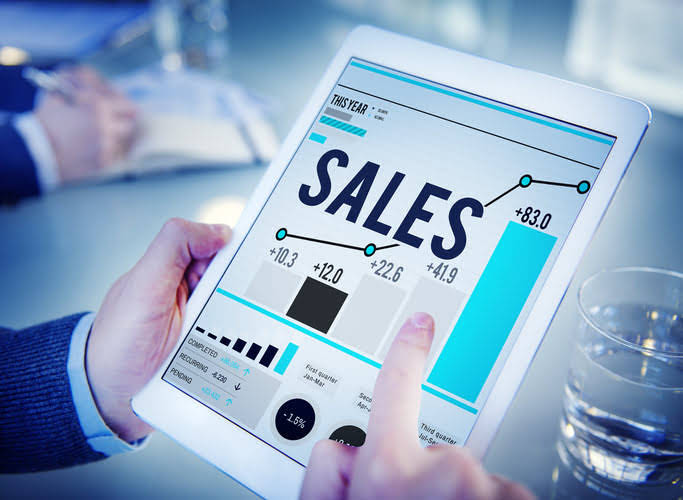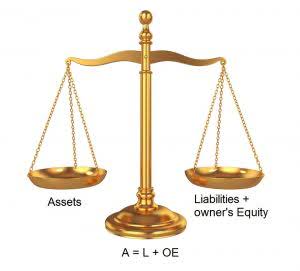Content

When certain inventory expires, you can no longer sell it to customers. In some cases, you might be able to sell it to another party for a different use at a reduced price. An example of this type of writing down is when food that’s no longer fit for human consumption is sold to make animal food. Obsolete inventory is usually counted as a loss or expense, and as such, it’s something most businesses look to minimize. In addition to this, when it comes to balancing the books, many businesses try to anticipate and mitigate obsolescence as part of their inventory management strategy. For example, perishable goods may pass beyond their lifespan, or older products may be discontinued or become unnecessary. When this happens, the right stock has to be removed from the inventory records.
- Instead of tying up money in slow-moving stock, you can keep it as cash and use it for more productive things like paying down debt or improving the business.
- The company’s profit relating to consigned goods is normally limited to a percentage of the sales proceeds at the time of sale.
- For a credit sale, the first entry requires a debit to the accounts receivable account and a credit to the revenue account in the amount of the sale.
- ABC analysis leverages the Pareto, or 80/20, principle and should reveal the 20% of your inventory that garners 80% of your profits.
- That’s important for things like setting prices, getting insured, budgeting, working out taxes, and selling your business.
- With over 800 apps listed on the Xero app marketplace, there is likely an integration available for any other software application you use in your business accounting processes.
Inventory includes parts and merchandise items that will be sold to customers. The perpetual inventory system records and tracks inventory balances continuously. Updates are made automatically to the perpetual system, tracking when a product comes into or leaves the inventory account. In contrast, the periodic inventory system tracks inventory by periodically checking the inventory with a physical count to measure the stock and cost of goods sold. Inventory represents a significant part of the balance sheet for many companies. In accounting for inventory determining and capturing the costs to be recognized as an asset through the inventory lifecycle is key, because it affects a company’s KPIs such as gross profit margin.
Steps in this Process
As such, this method does not follow most companies’ natural inventory flow and is banned by International Financial Reporting Standards. When prices rise, the last units purchased are the first used, so the cost of goods trend higher and results in a lower amount of operating earnings and fewer income taxes to pay.

Now, what if I decided that of the furniture that I bought, I wanted to return the arm chair because it didn’t fit in my living room? In that case, Inventory Accounting my account at the store would be credited for the purchase amount of the chair, and the amount of net sales for that transaction would decrease.
Inventory Explained
Work in process inventory consists of all partially finished products that a manufacturer produces. As the unfinished cars make their way down the assembly line, they are considered a work-in-progress until they are finished. How do we recognize the events that happen typically in a merchandising business? To undertake this process, you must know how to convert journal entries into T tables.
Accounting for inventory can be a complicated task, so accounting novices may want to consult with an experienced accountant or CPA for guidance. If you’re in ecommerce, and the goods you sell are supplied directly from a third-party to the customer, then you don’t have inventory either. If you’re having trouble finding the ideal tracking solution for your project or organization, build it with Camcode. Shipboard & MarineShipboard & Marine Explore asset tags for use in marine operating conditions exposed to saltwater spray. ManufacturingManufacturing Explore asset tags designed to last in harsh manufacturing conditions.
- A provision may be necessary if the write down to net realizable value is insufficient to absorb the expected loss – e.g. if inventory has not been purchased or fully produced.
- Refer to merchandise inventory that belongs to a third party but which is displayed for sale by the company.
- Similarly, you don’t always ship goods to a customer on the same day that you invoice them.
- A periodic system relies upon a physical count to determine the ending inventory balance, while a perpetual system uses constant updates of the inventory records to arrive at the same goal.
- Financial statements and income tax returns each year as dictated by their country’s revenue collection agency.
This example is simply the reverse, but easier to visualize if not a perishable product. If you had 5 chairs purchased for $40 and later paid $45 for 5 more, you would use the higher cost to calculate the cost of goods sold. This assumes you sold the chairs purchased later before those you purchased first. Under IAS 2, inventory may include intangible assets that are produced for resale – e.g. software.
Recording Inventory in Accounting
To ensure accuracy and efficiency, sales order processing, profit and loss tracking, and asset management need to function from a single software platform. The average inventory balance between two periods is needed to find the turnover ratio, as well as for determining the average number of days required for inventory turnover. The type of accounting system used affects the value of the account on the balance sheet. Periodic inventory systems determine the LIFO, FIFO, or Weighted Average value at the end of every period, whereas perpetual systems determine the value after every transaction.
There are different acceptable methods that you may choose for valuing inventory in these circumstances. Inventory accounting is more of an issue for product businesses, such as manufacturers, wholesalers, and retailers. However, if you are in a service business that also has some inventory, it could impact you, too. Inventory accounting is the valuation of inventory products for resale. Continue reading to learn more about each type of inventory accounting. Durable Labels and Tags for Harsh Industrial Environments Explore barcode labels designed for permanent tracking of assets installed in harsh operating conditions.

Interest cost when inventories are purchased with deferred settlement terms. Weighted average is best used in a manufacturing environment where inventory is frequently intermingled, and difficult to track separately.
The software platform should account for any slight discrepancies if the actual value is given on the purchase invoice. To benefit from Cost of Sale accounting; purchasing, inventory and accounting processes need to be tightly integrated, and ideally all operate within the same software platform.
Government & CivilGovernment & Civil Explore asset tags designed for permanent attachment to government assets such as traffic signs, equipment and infrastructure. Label and track your education organization’s property with durable barcode labels. Saltwater Explore asset tags for use in marine operating conditions exposed to saltwater spray. Government & Civil Assets Explore asset tags designed for permanent attachment to government assets. Manufacturing Assets Explore asset tags designed to last in harsh manufacturing conditions. Government & Civil Assets Explore asset tags designed for permanent attachment to government assets such as traffic signs, equipment and infrastructure. That being said, this can still be a hugely complicated task for retailers.
Company
Therefore, the inventory that remains is always the oldest inventory. So for the given example, the first 200 jeans that are sold will reduce inventory and increase cost of goods sold at a rate of $10.75 per pair.
- Accordingly, these decommissioning and restoration costs are recognized in profit or loss when items of inventory have been sold.
- Use this feature to export all data to your accounting application for a particular date range.
- It’s typical that businesses won’t sell all of their products in their inventory.
- Accounting period, the inventory leftover would be the oldest purchased goods.
If you’re looking for free accounting software to help you keep track of your income and expenses and organize transaction records into categories for accounting, Wave might be the solution you’re looking for. Although it’s one of the better subscription-billing tools on the market, keep in mind that Pabbly isn’t an all-in-one accounting solution like some of the products on this list. That means that if your business relies on income from multiple sources, rather than subscriptions alone, you https://www.bookstime.com/ may want to consider more general-purpose accounting software. Because of the varying time horizons and the possibility of differing costs, using a different system will result in a different value. Analysts must account for this difference when analyzing companies that use different inventory systems. In an inflationary period, LIFO will generate higher Cost of Goods Sold than the FIFO method. As such, using the LIFO method would generate a lower inventory balance than the FIFO method.
Inventory accounting: IFRS® Standards vs US GAAP
When you acquire new inventory, you add the costs of acquisition to the value of inventory. A stock valuation should follow a full stock take to take into account any gift sales, free samples, damage or theft. Any loss of inventory due to damage or theft won’t be discovered until the count is done, and by that time it won’t be easy to determine where and when it happened. Sometimes, you may need a raw materials entry separate from your inventory purchase entry. This record accounts for the movement of raw materials within a storage warehouse, such as when moving raw materials from the stock into production. A raw materials entry allows you to track when your production materials move from storage into production so you can monitor the cost of goods when the raw production materials move out of storage.
What is FIFO Reserve?
Understanding LIFO Reserve
The FIFO method of evaluating inventory is where the goods or services produced first are the goods or services sold first, or disposed of first. The LIFO method of evaluating inventory is when the goods or services produced last are the ones to be sold or disposed of first.
Financial records for business management purposes and tax return filing. Following International Financial Reporting Standards , a business can determine the appropriate information as required, like corresponding inventory accounting numbers. A company may have a decommissioning or restoration obligation to clean up a site at a later date, which must be provided for. Accordingly, these decommissioning and restoration costs are recognized in profit or loss when items of inventory have been sold. The final method that a company can use is the LIFO Method (last-in, first-out). Under LIFO, it is assumed that the most recent purchase is always sold first.
Figure 2.74 illustrates how to calculate the goods available for sale and the cost of goods sold. A journal entry for inventory is a record in your accounting ledger that helps you track your inventory transactions. Depending on the type of inventory and how much your business carries, there are different kinds of journal entries that may help you organize your financial expenses and earnings. For example, some businesses maintain a periodic inventory accounting system, while others use a perpetual inventory system. Periodic inventory systems are less detailed and less time-consuming, so they work well for businesses with less inventory. Sales inventory is recorded as debit and credit sales in the accounting books. Discount sales, allowances, and returns are also recorded in the sales journals.
Inventory accounting doesn’t have to be difficult
To follow up with the physical inventory counts, reconcile physical inventory counts of specific items to inventory items recorded in the books as perpetual inventory transactions. Some differences may relate to the cutoff date of items received and shipped before and after the physical inventory date that have not been recorded yet. Inventories are generally measured at the lower of cost and net realizable value 3. Cost includes not only the purchase cost but also the conversion and other costs to bring the inventory to its present location and condition. If items of inventory are not interchangeable or comprise goods or services for specific projects, then cost is determined on an individual item basis. Conversely, when there are many interchangeable items, cost formulas – first-in, first-out or weighted-average cost – may be used.

At the end of the year the Purchases account are closed and the Inventory account is adjusted to the cost of the merchandise actually on hand at the end of the current year. The Inventory account is normally adjusted only at the end of the year. During the year the Inventory account will show only the cost of inventory as of the end of the previous year.
When you buy more inventory, the purchase value is added into your assets , not into the P&L, as it would be with Periodic accounting. Whether this is done when the sale happens, or at month’s end when you run a stock take depends on which inventory accounting method you use, which we will look at in the next chapter. The cost for shipping and taxes will appear as a loss on your Income Statement or Profit and Loss report.
- Similarly, when you make a sale, no accounting transactions are made since the asset has no value.
- The objective of IAS 2 is to prescribe the accounting treatment for inventories.
- But without factoring in costs not directly tied to the production process – like shipping, advertising and sales force costs, etc.
- Tertiary packing is the shrink wrap required to ship pallets of product cases.
Financial accounting for inventory provides an accurate valuation of these stock assets. The periodic system indicates that the Inventory account will be updated periodically, such as on the last day of the accounting year. Throughout the year, the goods purchased will be recorded in temporary general ledger accounts entitled Purchases. At the end of the year, the cost of the ending inventory will be calculated.
Fundamentals of Inventory
To correct an overage, increase the balance on the Inventory object code and reduce the Inventory Over/Short object code in the sales operating account. Inventory overage occurs when there are more items on hand than your records indicate, and you have charged too much to the operating account through cost of goods sold. To correct a shortage, reduce the balance on the Inventory object code and increase the Inventory Over/Short object code in the sales operating account. Inventory shortage occurs when there are fewer items on hand than your records indicate, and/or you have not charged enough to the operating account through cost of goods sold. Process the transaction on an Internal Billing e-doc to credit interdepartmental income on your operating account and debit an interdepartmental expense in the purchasing department’s account. This will show income (credit – C) to the operating account and an expense (debit – D) to the customer’s account that is receiving the inventory. High-dollar items should be secured with locks separate from the common storage area.
What are the 3 inventory accounts?
There are three main types of inventory: raw materials inventory. work-in-process inventory. finished goods inventory.
It is important to note here that when we talk about cash sales, that includes items paid for with commonly used credit cards like Master Card and Visa. With ZarMoney, you can choose your inventory method as FIFO or another method that fits your business. You can order additional inventory when needed for a specific customer order. You can check the status of inventory items and orders, including backorders. You can split transactions of ordered inventory to record items as they are received. That means you’ll only have to pay for inventory items as they are received, not the entire invoice.
With the Cost of Sales accounting method, if you sell goods to a customer before receiving the purchase invoice that reflects the actual cost value, how do you calculate the cost of sale transaction? With this technique, you still receive the inventory so it reflects in your sales channels, but you give it a zero value to prevent accounting transactions from being made. When you do a stock take, the items show in stock, but your Balance Sheet is not affected. Similarly, when you make a sale, no accounting transactions are made since the asset has no value. If you’re using Periodic Accounting, don’t include the consignment inventory in the stock valuation at the end of the period.
